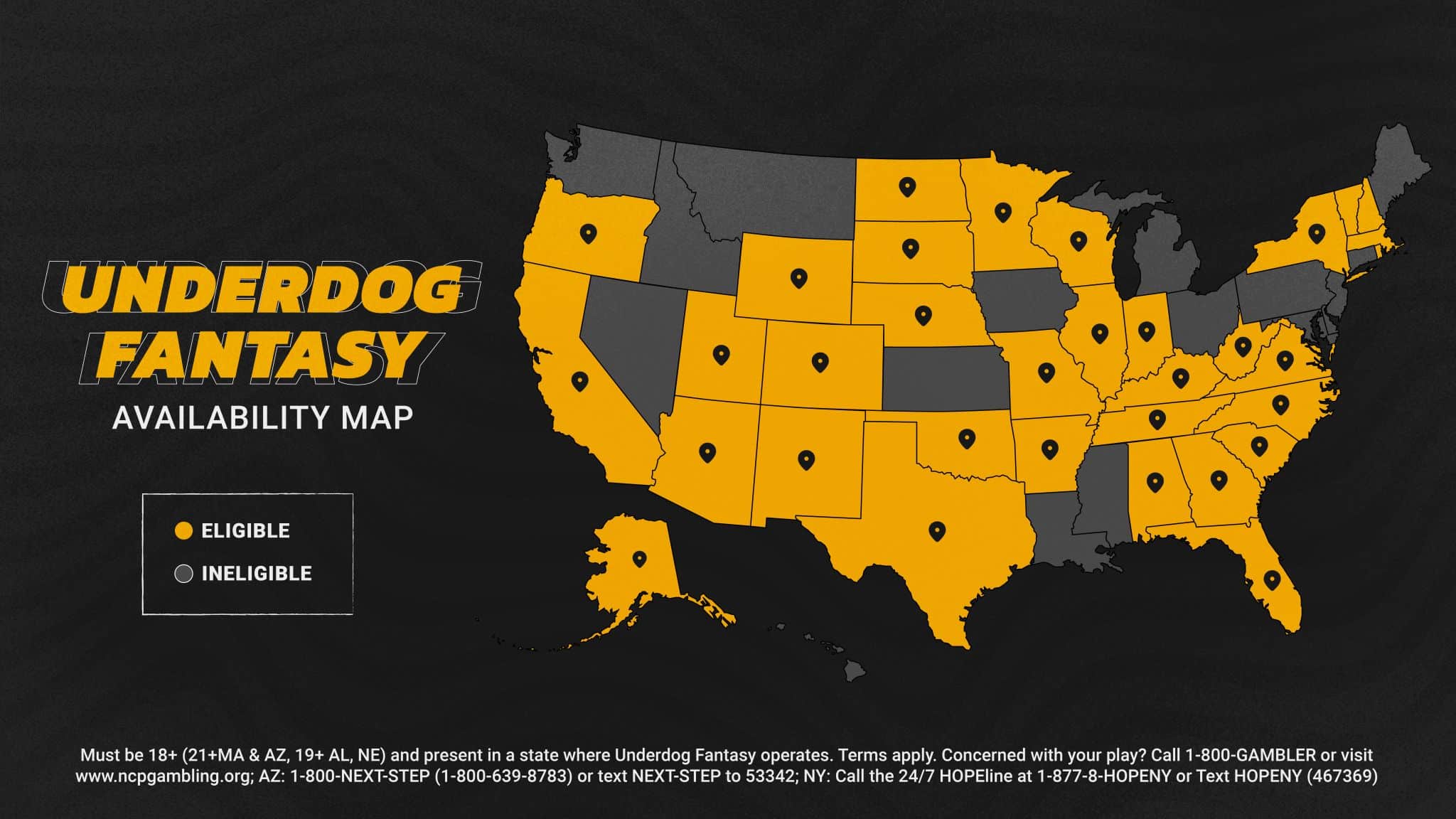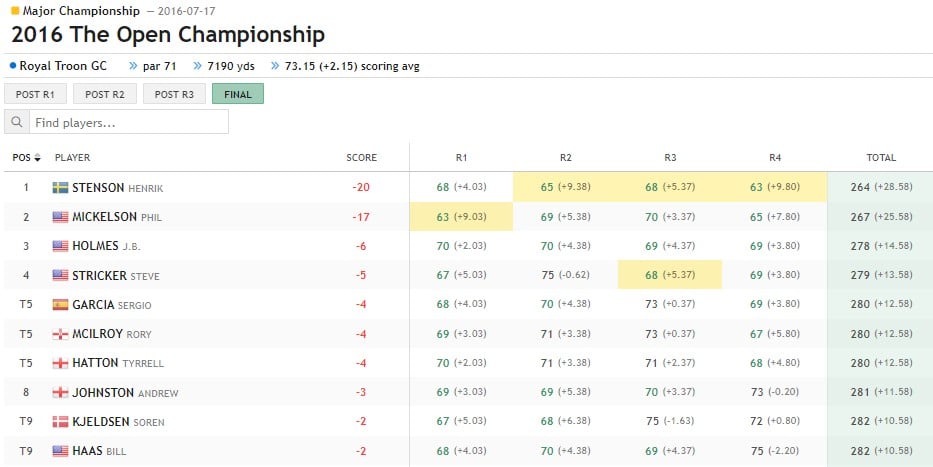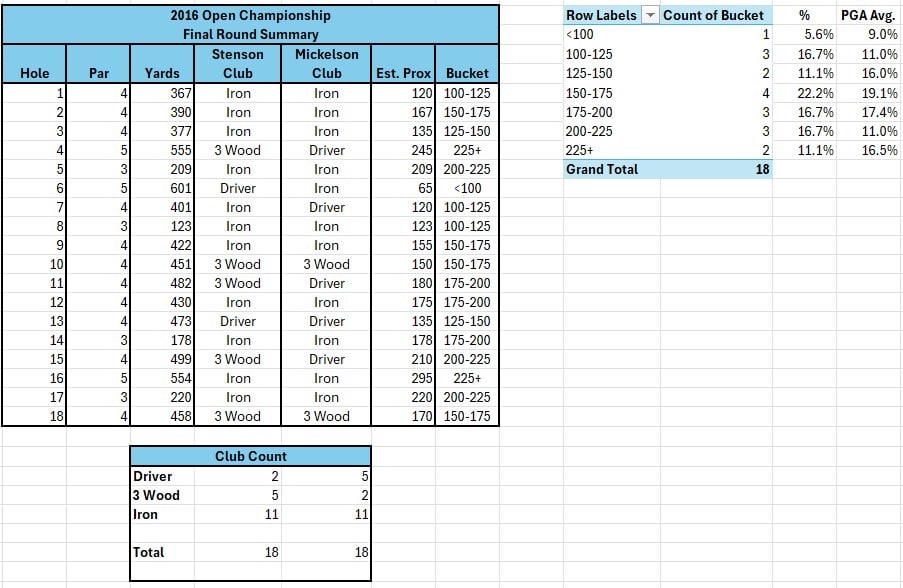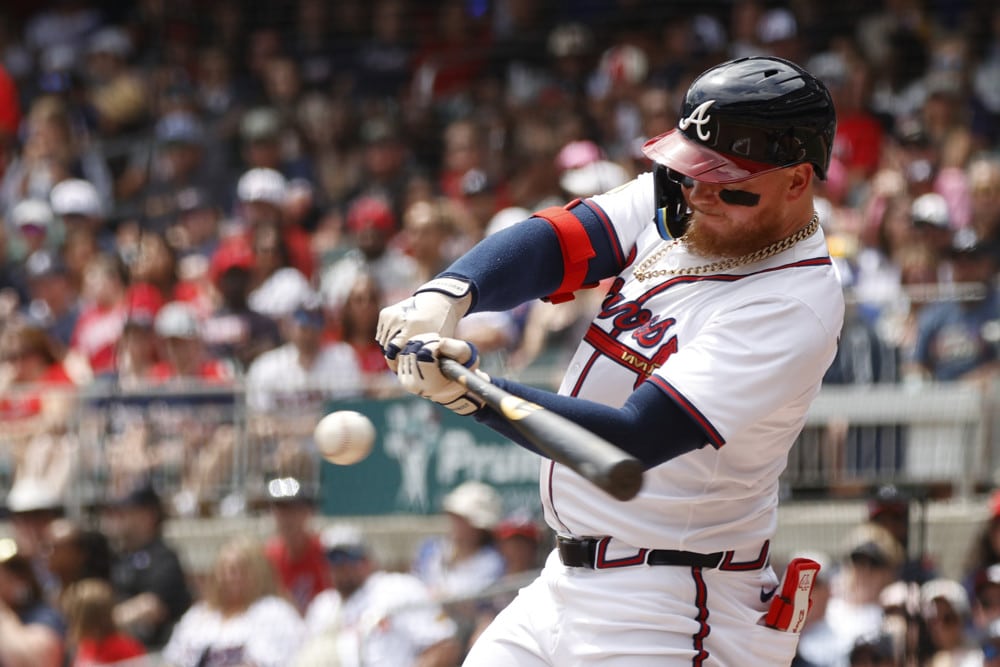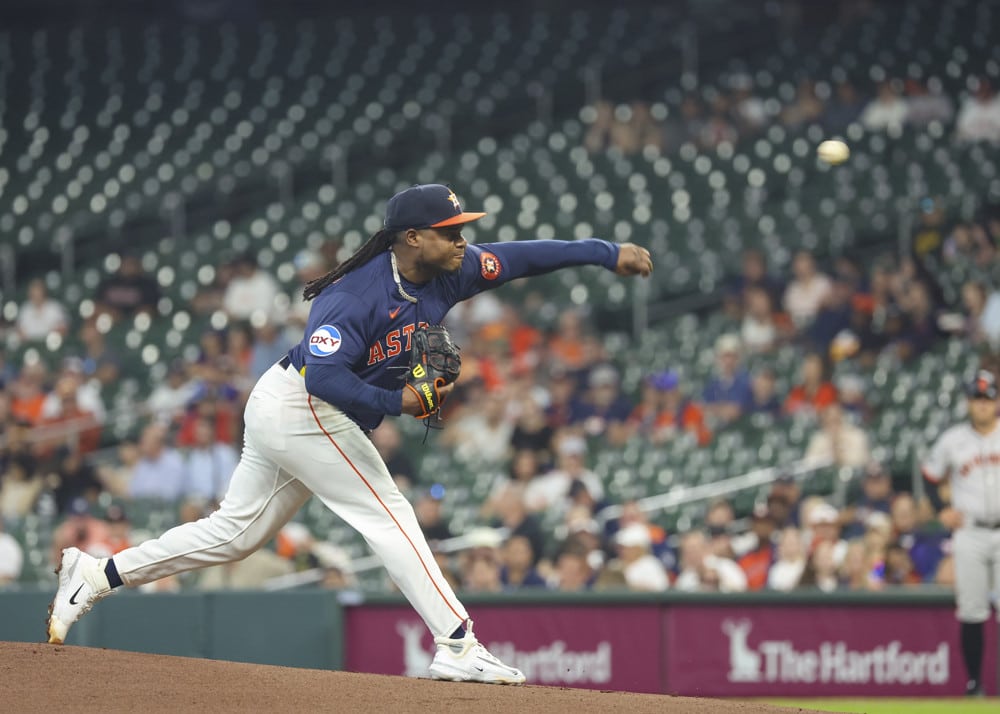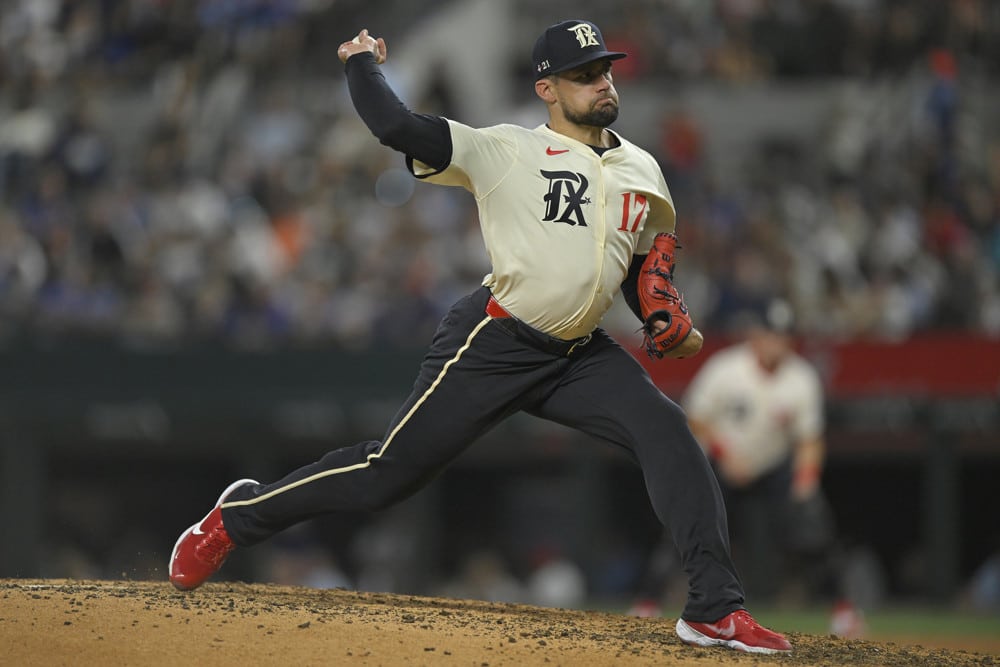The final major championship of 2024 is upon us. A full field of the best golfers in the world take on the tricky Royal Toon Golf Club for the 2024 Open Championship. As always, here is an early preview of the 2024 Open Championship and a guide to betting the tournament.
Go here for more Golf content!
The Golf Course
Here are some key facts about Royal Troon Golf Club:
Opened: 1878
Architects: George Strath and Willie Fernie
Renovations/Restorations
- 1923: James Braid
- Various Lengthening and Bunker Additions through 2024
Other Majors/Events Hosted
- 1923 Open (won by Arthur Havers)
- 1950 Open (won by Bobby Locke)
- 1962 Open (won by Arnold Palmer)
- 1973 Open (won by Tom Weiskopf)
- 1982 Open (won by Tom Watson)
- 1989 Open (won by Mark Calcavecchia)
- 1997 Open (won by Justin Leonard)
- 2004 Open (won by Todd Hamilton)
- 2016 Open (won by Henrik Stenson)
Par: 71
Yards: 7,385 Yards
Royal Troon has been lengthened a bit since the last Open in 2016. Here is a summary of how much it has been lengthened for the 2024 Open Championship:
- Hole No. 4 – 599 Yards (played 555 in 2016)
- Hole No. 5 – 220 Yards (played 209 in 2016)
- Hole No. 6 – 623 Yards (played 601 in 2016)
- Hole No. 9 – 440 Yards (played 422 in 2016)
- Hole No. 11 – 498 Yards (played 482 in 2016)
- Hole No. 12 – 451 Yards (played 430 in 2016)
- Hole No. 14 – 200 Yards (played 178 in 2016)
- Hole No. 16 – 572 Yards (played 554 in 2016)
- Hole No. 17 – 242 Yards (played 220 in 2016)
As far as the layout of the golf course, Royal Troon is basically a play in three acts. Holes 1-6 are considered a gentle handshake to your round at Royal Troon. It typically plays downwind and is a stretch of holes that players must take advantage of. Birdies are available over the first six holes, which feature three Par 4’s under 400 yards and a pair of Par 5’s.
In the second act of Royal Troon, holes 7-12 start to get a lot more quirky (and difficult). The golf course turns inland, and golfers play in a counterclockwise fashion. They play through various sand dunes and an ocean of gorse, which is a one-stroke penalty for anyone who finds it. There are serious car crashes to be had over this stretch of holes.
This stretch of holes also has Royal Troon’s most infamous holes. Hole No. 8 – the Postage Stamp, is one of the most photographed holes in all of golf. It is also one of the most feared short iron Par 3’s in the world. Below is a video on the history of the Postage Stamp from Golf Digest:
Here is another video of the Postage Stamp absolutely punishing players during the 2016 Open Championship:
The other brute during this stretch of holes is No. 11 – Railway. This is an absolutely ball-buster of a hole at Royal Troon:
This hole was lengthened to nearly 500 yards in 2024 as if it needed any more difficulty. Even at only 470 yards in 2016, it played to a scoring average of 4.56. And it’s difficult because there’s nowhere to hide in this hole.
On the tee, players see nothing but a sea of gorse in front of them. They can’t see much of the fairway with their tee shot (if at all), so they’ll have to rely on a target well out in the distance to aim at. And there’s no room to miss. Miss right, and the ball will likely sail out of bounds onto the railroad tracks. Miss left, and you can fire one into the gorse and incur a penalty stroke.
Even if you manage to successfully split the fairway trouble awaits you on the approach shot. On the left of the green is a pot bunker that acts like a magnet, as well as another gorse bush. About 10 yards right of the green is the boundary fence that separates the golf course from the railroad tracks.
Plenty of golfers had a tough time at Hole No. 11 in 2016. Here’s Thomas Pieters, who gives a great example of their struggles.
The final act comes across Hole 13-18. This stretch of golf looks similar to what players face over their first six holes. It plays back along the coast, and the land isn’t nearly as dramatic as they had just seen inland.
However, the key difference between this stretch of holes and the first six is that it generally plays into the wind. And it plays much tougher than the holes it parallels. Unlike Holes 7-13, however, this stretch, while very difficult, is more fair. Players can still score well in this stretch, but they’ll need to play exceptionally. And any sloppy play will be penalized as such.
Here’s a few more videos that adequately previews what to expect at Royal Troon:
Betting Strategies
The conversation about Royal Troon can transition into what types of golfers to target for the 2024 Open Championship. To do that, one needs to revisit what happened in 2016.
Here’s the final leaderboard from the 2016 Open Championship:
J.B. Holmes gained almost 15 shots on the field. That’s good enough to win most professional golf tournaments. And yet, didn’t play in the same stratosphere as Henrik Stenson and Phil Mickelson did at the 2016 Open Championship.
So how did Phil and Stenson lap the field and play, essentially, an entirely different golf course than their 153 other opponents? Unfortunately, statistics from the field are very limited and scarce. And no categorical strokes gained were maintained. However, as a keen observer of the 2016 Open for both gambling and enjoyment purposes, I noticed two central themes in how Stenson and Phil attached Royal Troon.
- They were ultra-conservative off the tee.
- They put the lights out that week.
Upon review of the final round of the Open Championship, Stenson and Phil both took iron off the tee (on the non-Par 3 holes) on 50% of their tee shots. They tip-toed between the gnarly and unusually thick fescue rough that surrounds each fairway, avoided the penal pot bunkers that gobble up errant tee shots, and steered clear of the oceans of gorse bushes that will incur a one-stroke penalty for anyone who finds it. And they did this better than anyone in the field that week.
By avoiding most trouble off the tee all week, Stenson and Phil gave themselves great looks to fire at the greens over and over. And historically speaking, players who have won Opens at Royal Troon have been able to wield a hot putter. Justin Leonard hit everything he saw that week. So, too, did Todd Hamilton in 2004. And Phil and Stenson traded clutch birdie putts back and forth all week long before Stenson finally got the best of Phil down the back nine on Sunday.
In addition, both players were elite with their irons heading into the U.S. Open. Stenson was ranked 2nd in Strokes Gained – Approach ahead of the 2016 Open Championship. Mickelson ranked 15th. And given the wide array of different types of approach shots they were expected to hit at Royal Troon that week (see below), their strengths as premium iron players throughout the bag shone through.
After the dust was settled, Stenson was the victor. But there were definitely signs that his maiden and long overdue major championship was coming in the months leading up to the tournament. For starters, Stenson was starting to find success with the club that was always his kryptonite – the putter. He started to putt very well ahead of the 2016 Open. That helped him rip off a very strong stretch of golf ahead of the 2016 Open, which included a win at the 2016 BMW International Open and a T4 at the Nordea Masters.
In fact, almost all recent Open Champions were beginning to find form with both their irons and putters ahead of their eventual victories. Here are a few prominent examples (with per round averages).
2023: Brian Harman:
Here were Brian Harman’s last three starts before winning the 2023 Open Championship
- Travelers Championship – T2: +1.25 Approach, +1.28 Putting
- Rocket Mortgage Championship – T9: +1.44 Approach, +0.90 Putting
- Genesis Scottish Open – T12: -0.74 Approach, +1.39 Putting
Other than a poor iron effort at the Scottish, Harman was trending up in these areas in the weeks before his visit to Royal Liverpool.
2022: Cameron Smith
- Ranked 2nd in Strokes Gained – Approach and 14th in Strokes Gained – Putting before his win at St. Andrews
2019: Shane Lowry
Here were Shane Lowry’s final four starts before his win at Royal Portrush:
- PGA Championship – T8: +1.14 Approach, +0.84 Putting
- RBC Canadian Open – T2: +0.49 Approach, +1.83 Putting
- U.S. Open: T28: +0.45 Approach, +0.99 Putting
- Dubai Irish Open: +0.73 Approach, -0.26 Putting
Like Brian Harman, Lowry was trending up in several key areas ahead of his win at the Open.
2018: Francesco Molinari
Molinari was the best golfer in the world in the summer of 2018. And it culminated with his win at Carnoustie. Here is what Molinari was doing before his Open Championship win:
- BMW PGA Championship – WIN: +1.45 Approach, +0.16 Putting
- Italian Open: 2nd: +0.71 Approach, +1.48 Putting
- U.S. Open – T25
- Quicken Loans National: WIN: +2.44 Approach, +0.81 Putting
- John Deere Classic – T2: +0.85 Approach, +0.40 Putting
2015: Zach Johnson
While most remember Zach Johnson as a great putter throughout his career, he was struggling with his putting throughout most of the 2015 season. Through the Crowne Plaza Invitational at Colonial, Zach Johnson ranked 37th in Strokes Gained – Approach but 166th in Strokes Gained – Putting.
However, like other champions of the Open, he started to find something with his putter before ultimately winning at St. Andrews.
Here was his form heading into the 2015 Open:
- AT&T Byron Nelson – 5th: +0.03 Approach, +1.03 Putting
- Travelers Championship – 6th: +0.84 Approach, +0.99 Putting
- John Deere Classic – T3: +1.28 Approach, +1.05 Putting
Zach Johnson got hot with his irons and putting at the right time. And that is what helped him win the 2015 Open Championship at St. Andrews.
Many of these names aren’t necessarily the most talented golfers in the world. But they got hot at exactly the right time. And while maybe at the time their victories might have been a surprise, in hindsight, given their form and how well they were trending up with their irons and putting before their victories, it isn’t shocking.
As such, it might benefit bettors this week to try and take a blind resume approach to their betting card. Ignore the names and focus just on recent form, specifically with their putting and irons. History shows that’s been the key indicator to who will eventually hold the Claret Jug on Sunday.
Lastly, here are other trends gamblers can look at to target potential outright bets at the Open Championship:
1. 11 out of the last 11 Open Champions Made the Cut in their final start before their victory.
2. 11 out of the last 11 Open Champions had a Top 10 in one of their five final starts before their victory.
- In addition, 9 of the last 11 Open Champions had a Top 5 in one of their last five starts before their victory.
3. 10 out of the last 11 Open Champions ranked inside the Top 30 in Strokes Gained- Tee-to-Green before their victory
4. 10 out of the last 11 Open Champions ranked inside the Top 80 in Strokes Gained – Around-the-Green before their victory
5. 10 out of the last 11 Open Champions had a victory within the last two calendar years before their win at the Open
6. 10 out of the last 11 Open Champions had at least one Top 15 finish in a major in the 12 months before winning the Open
7. 10 out of the last 11 Open Champions finished worse than T30 in the previous year’s Open they played in
- A bizarre yet stunningly reliable trend.
8. Nine of the last 11 Open Champions had a previous Top 10 at an Open in their career
9. Nine of the last 11 Open Champions played the week before the Open.
10. Nine of the last 11 Open Champions were inside the Top 30 in Strokes Gained – Approach before winning the Open
11. Nine of the last 11 Open Champions ranked inside the Top 80 in Three Putt Avoidance before winning the Open
Follow the tips in this preview, and one should be able to put together a strong betting card or DFS lineup for the 2024 Open Championship.



